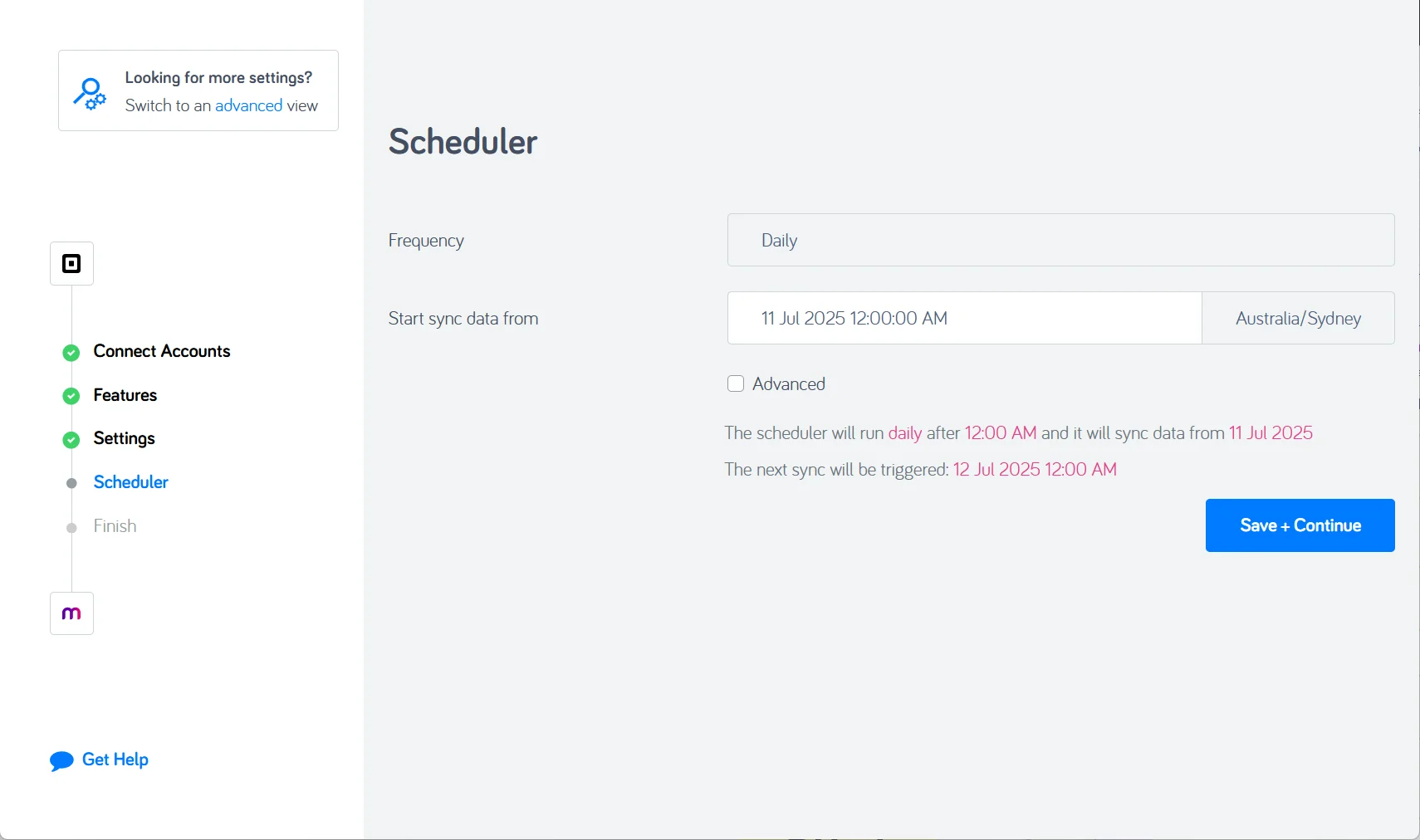If you use WooCommerce for your online sales, you can sync your WooCommerce orders, payments, and other key financial details directly into MYOB Business by integrating WooCommerce and MYOB via Amaka.
With Amaka, your WooCommerce data is automatically imported into MYOB Business, helping you keep your accounts up to date and reducing manual data entry. This integration enables streamlined accounting and accurate financial records.
How it works
Each day, the integration syncs your WooCommerce transaction data to MYOB Business. You can choose to summarise your sales information (for easy reconciliation) or create detailed entries for each order, depending on your needs and your setup preferences.
This process provides visibility of your total sales, payment methods, and the status of orders—making it simple to keep track of your eCommerce performance directly within MYOB Business.
Why you should set it up
Centralise your data. Bring your WooCommerce sales directly into MYOB for accurate financial reporting.
Automated accounting. Orders, payments, fees, and taxes sync daily, reducing the need for manual data entry and helping prevent errors.
Faster reconciliation. The sync includes payment details and deposit information, speeding up your bank reconciliation process.
Better decisions. Up-to-date synchronisation means MYOB reports reflect your true current position.
Easy setup. Amaka’s guided onboarding makes connecting WooCommerce and MYOB fast, with customisable options for mapping accounts and taxes.
Already have sales? No problem, you can back-date your data synchronisation and generate sales summaries for your previous sales.
Pricing
Amaka’s integrations are typically offered under a freemium pricing model (the first integration and some basic features are free to use, additional integrations and advanced features are available for a fee).
For premium integrations, Amaka offers a 7-day free trial - allowing you to find a solution that fits your need before committing to purchase.
Support
Amaka offers extensive support, including unlimited help from Integration Experts. Onboarding and ongoing assistance is available via Zoom calls, live chat, and ticketing. Dedicated help guides are provided for each integration.
Setting up BigCommerce + MYOB integration
Below is an overview of how to set up the integration based on Amaka's Express simple setup mode. For more details, including the Advanced setup option, refer to the WooCommerce + MYOB setup guide.
Before you begin
To get the full benefits of this solution, check that you've set these things up in MYOB Business:
-
Customers and suppliers – check that you've created your customer and supplier records so you don't need to enter these each time you buy or sell. You can also speed up getting paid by giving customers an easy way to pay your invoices online – see Online payments.
-
Bank feeds – if you want to reconcile your online sales automatically, you'll need to have set up bank feeds and connected your bank to the MYOB Business category you'll use to track your online sales.
-
Categories – if you choose the Express Amaka setup, you won't need to create any new categories in MYOB Business to track your sales – Amaka will create default categories in MYOB Business to map sales and payments from your e-commerce. If you choose the Advanced Amaka setup (recommended for accountants and bookkeepers), which allows you to choose your own custom sales and payments mapping, you may need to create categories in MYOB Business.
1. Connect accounts
Sign up for or log in to your Amaka account.
On the Integrations page, click Create new one.
Choose WooCommerce as your e-commerce provider.
On the Connect Accounts page, click Connect to WooCommerce.
Authorise Amaka to access your WooCommerce data.
On the Connect Accounts page, click Connect to MYOB.
Set your Company Timezone to ensure transactions are accurately time-stamped in MYOB according to your business's local time.
2. Select relevant features
Choose whether you want to summarise all your daily WooCommerce transactions as a single invoice in MYOB Business or create a separate invoice for all transactions.
If you need help setting up your integration, click Yes in the Do you need help? message to schedule a call with an integration expert.
3. Choose settings
Tax Types. Map WooCommerce taxes to your MYOB tax codes for accurate reporting so the tax components of your sales are recorded correctly in MYOB Business.
Bank Accounts. Select which MYOB accounts WooCommerce payments will be posted to so your sales from WooCommerce flow directly into MYOB, making your bookkeeping and reconciliation a lot easier and saving you time compared to manually entering the data.
Invoice Preview. See a sample of how WooCommerce orders will appear in MYOB.
4. Scheduler
Select the start date for data syncing. You can back-date the integration to import earlier transactions and inventory history.
5. Finish
Find out what to expect next or return to your Amaka dashboard.
FAQs
Can I turn off an integration?
Yes, at any time you can go to the Amaka dashboard and disable an integration by either turning it off or deleting it entirely. For more information, see Amaka help.
How often is my data synchronised from Amaka?
Your e-commerce data is synchronised with MYOB Business daily. The time your data is synchronised depends on the time and date you choose in the Amaka Scheduler:

For more information, see Amaka help.